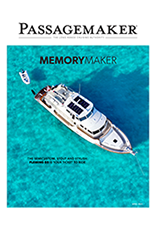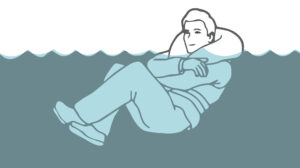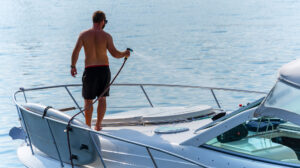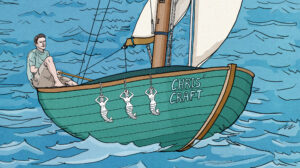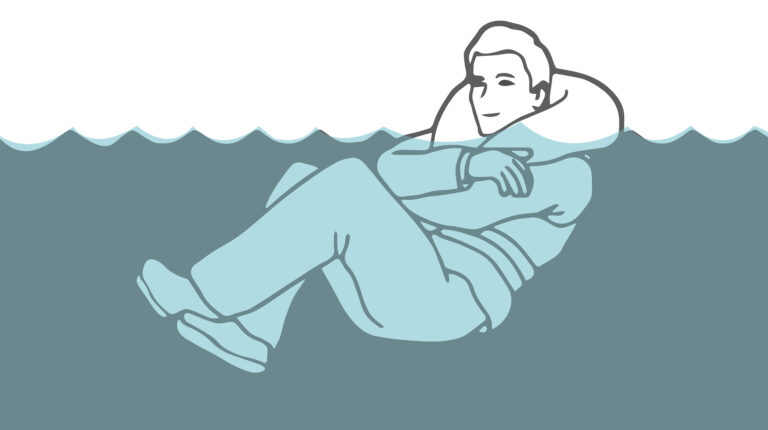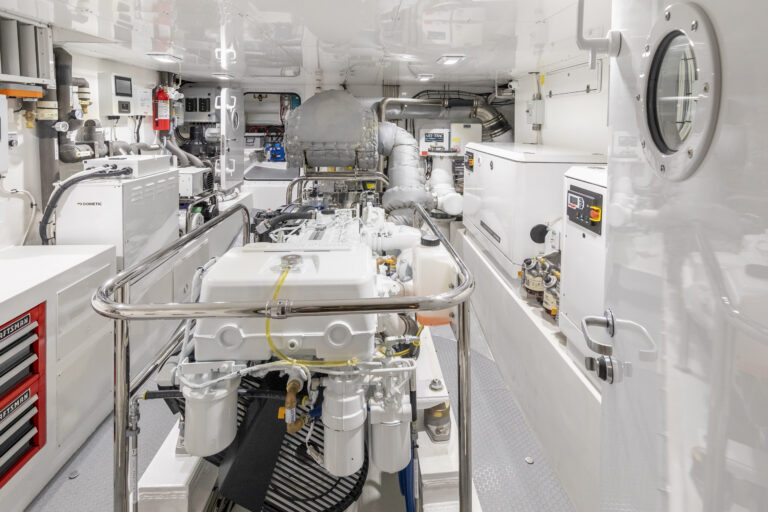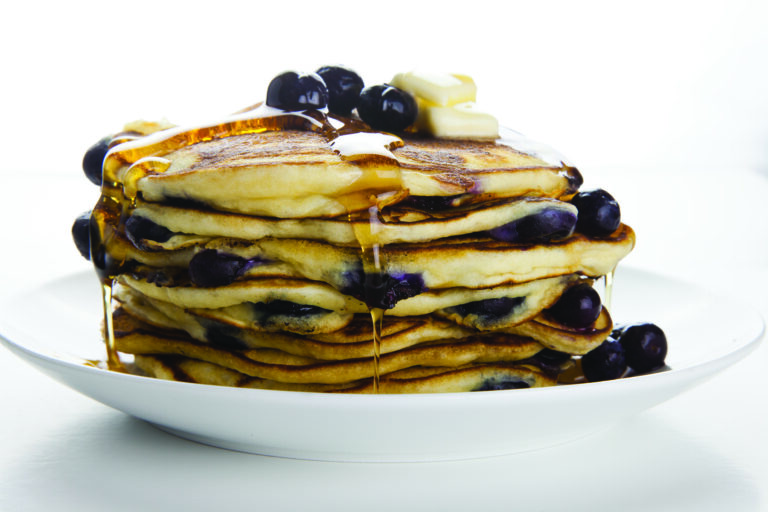The rugged, seaworthy designs that George Buehler conceived for home boatbuilders have attracted adventurous souls across the globe. The Diesel Duck, in particular, stands as a testament to Buehler’s deep commitment to functional beauty. It merges the practicality of a long-range ocean cruiser with the lines of traditional Pacific Northwest salmon trollers. With a sail-assisted design, the Ducks are a great fit for power cruisers looking for maximum efficiency.

Sue Plotnick and Peter Belden wanted an oceangoing vessel that would also serve as their home. The couple were living on Seabird, a 48-foot Rawson trawler, in the early 2000s in Sausalito, Calif. Belden was a ferry captain on San Francisco Bay, a job that allowed him to build an extensive list of potential next boats in his head. Buehler’s The Troller Yacht Book hooked both Belden and Plotnick, specifically the plans for the Diesel Duck 48.
After more research, they modified Buehler’s plans for a Diesel Swan 55 to create something slightly different. “We liked the design of the DD48 but felt like the interior volume wasn’t big enough for us to live comfortably in,” Belden says. The Diesel Swan 55 design had a flush deck, which created more volume in the interior with full headroom throughout.

During the design process, Belden consulted with Buehler and thumbed through back issues of Passagemaker, “one of our great reference sources on figuring out what we wanted to do on a custom boat because you could see what other people had done, solved similar problems and come up with neat solutions for things.” The seasoned captain says Buehler “was very opinionated in the process,” including initially rejecting the idea of an internal rudderpost and integral swim step.
He preferred a transom-hung rudder, since it was “one less hole in the bottom of the boat.”

The next step was to make 3D plans from Buehler’s blueprints. A friend used CAD software to create the nesting files, which were then sent to the fabricators who would cut the steel for the hard-chined hull.

By this time, Belden had become operations manager for the Blue and Gold Fleet of ferries, with an office on Mare Island, a former submarine and naval base in Vallejo. He rented a space next to his office to build the boat. He hired a welder, Jesus Romero, for construction of the hull and pilothouse. Belden did fabrication and machinery installations on weekends and after work. Since the yard’s crane was decommissioned, the team used a forklift to move the steel plates around. “Jesus was pretty crafty with that stuff,” Belden says.

The keel blocks and bracing were situated on asphalt that got soft in the summer from the heat. Braces for the framed structure just wanted to move around. “It was a constant struggle to keep the frames straight and aligned until we got it locked in with the plating,” Belden says.

Plotnick says that at first, the couple “was a little naive,” not knowing that building this boat would become a whole lifestyle for the next decade. On weekends, they often camped in the boat’s hull in Vallejo, once it had been enclosed, so they could get an early start the next morning.

To keep costs down, they bought a used Cummins truck engine online. Belden rebuilt it, marinized it and then dropped it in the boat. Plotnick found “lots and lots of used stuff,” including surplus U.S. Navy hatches and watertight doors. The boat’s first suite of pilothouse electronics was rescued from shipyard dumpsters as ferries were refurbished. Plotnick also sourced the boat’s bronze pilothouse windows at a hefty discount from a company that had fabricated them for a fishing boat project that never went through. The couple redesigned the pilothouse to fit the windows.

Belden, who is self-taught and watched many online videos, says “you learn as you go.” For him, the allure in building Kama Hele was not just in the finished product, but also in the process—the challenge of designing, problem-solving and mastering new skills.

He had gained some experience while working on the ferries where his company did a lot of dry dock work, refits and new builds.

In 2012, with the engine in place, the couple splashed the hull into the waters off Mare Island, “We read some poems, drank champagne and crossed our fingers,” Plotnick recalls.
After the launch, they set off for Galilee Harbor in Sausalito, their home base. Having sold Seabird, the couple moved into Kama Hele’s unfinished interior, where they lived for the first couple of months without heat or running water.

“Suddenly we had this big empty shell to work with, and we could do anything we wanted,” Belden says, adding that they “would sit and stare and mock up cabinets, counters and shelves in cardboard, and tape them in place for a week or two, long enough for us to make sure we liked the spatial relationships and that we wouldn’t bang our elbows or hit our heads.” Sustainable woods such as hybrid Lyptus (which comes from two species of eucalyptus) and sapele were used for joinery and soles.

The project was completed in 2018. The boat’s name is Hawaiian for “traveler,” and that’s what she has proved to be.

In September 2018, they headed south on a three-week shakedown cruise to Catalina and the Channel Islands. In 2019, they embarked for Alaska, where there was lots of rain but also countless waterfalls, pristine waters, icebergs and virgin rainforests to explore, as well as fresh grilled salmon for dinner. Homeward bound, off Point Arena, Calif., the couple gasped when a 75-foot blue whale pulled alongside,

Last year, they returned to Alaska—it was a good year to view bears, they say—and they have gone back to the Channel Islands twice.
Today, Belden stands proudly on the bow and says: “The challenge is finishing it. It’s so easy to lose interest, lose momentum or run out of money. But to get the propulsion and ship’s systems on board, get the interior done and get it to be a finished boat, that’s where most of these projects stall out. And before you know it, somebody’s dream will become some big steel, rusty hull sitting in the back of somebody’s backyard.“

For them, building a Diesel Duck was more than just following plans. It was about transforming a utilitarian design into a seaworthy thing of beauty, and a home.
This article was originally published in the November/December 2024 issue.
